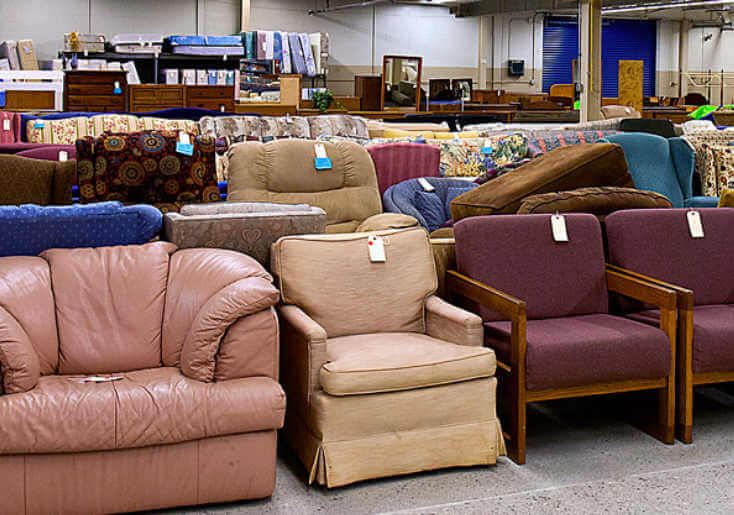When purchasing secondhand furniture, it’s essential to look beyond the surface. Tests like sitting in a chair or opening and closing drawers can help determine quality and durability. Also, remember to inspect upholstered pieces for bed bugs before bringing them home. Since you need to find out where the furniture was stored before being discarded, it may carry unwanted hitchhikers.
Wood
When shopping for used furniture near me for sale, you should consider the piece’s quality and durability. A professional furniture inspection service can help you identify any issues with a piece. It can also give you the information you need to determine whether it suits your home or office. Please also take the time to inspect the wood. You don’t need to know what type of wood it’s made from, but you should be able to tell if it’s solid or plywood and whether it has any veneers (a thin layer of premium wood covering a less-costly base). Solid wood is generally considered superior to pressed wood and fiberboard, although it’s important to note that even high-quality solid wood can crack over time. Aside from checking the furniture’s structural integrity, it would be best to be wary of potential contaminants such as bed bugs and dust mites, particularly when shopping at garage sales or flea markets. A good flashlight and magnifying glass are essential for detecting these tiny pests.
Fabric
Fabric is a key factor when purchasing furniture. Whether looking for a swivel chair, sofa, or bunk bed, high-quality fabrics can last years and save you money in the long run. One of the best ways to test for fabric quality is the Wyzenbeek test, which measures a textile’s durability by rubbing it back and forth. The more rubs a fabric can endure, the better its Wyzenbeek abrasion rating. Another method is the Martindale test, which uses a figure-eight pattern to rub fabric back and forth. However, a Wyzenbeek or Martindale test does not reveal if a fabric is resistant to UV light, water, chemicals, or odors. Another critical aspect of fabric inspection is checking for stains, mildew, and mold. When buying secondhand furniture, checking all sides of the piece, including underneath drawers and behind cabinets, is essential. To check for these problems, use a flashlight and magnifying glass. If you find a stain, try rubbing some bleach on the area. If the area’s color lightens, it is likely mold or mildew.
Upholstery
Furniture upholstery is essential to a piece’s overall look and design. It protects the underlying materials from wear and tear and extends their lifespan. Upholstery can be made of fabric, leather, or vinyl, depending on a customer’s needs and taste. Inspecting furniture from all angles and testing it before purchasing is a good idea. Simple tests like sitting in a chair, opening and closing drawers, or measuring a piece to ensure it fits your space can help avoid quality issues later. Inspecting the underlying construction of the furniture is also essential. For instance, solid woods are more durable than pressboard or veneered pieces.
Additionally, dovetailed joints are more sturdy than those that are cobbled together. Likewise, squashy cushion foam isn’t a sign of high-quality craftsmanship. Lastly, checking the labeling and tags on a secondhand piece of furniture before purchasing it is a good idea. This can tell you much about the piece’s history, including where and how it was made.
Structural integrity
Whether buying used furniture at a thrift store, yard sale, or Facebook Marketplace, it is essential to inspect the piece thoroughly. Taking the time to sit on a couch, open and close drawers, or measure a dresser can make all the difference in the quality of a purchase. Bed bugs aren’t just found in mattresses; they can also hitchhike on upholstered sofas and chairs. It is best to avoid upholstered furniture altogether, but if you must buy, inspect the piece for signs of these pests by placing it over a white sheet and examining its creases with a magnifying glass and white latex gloves. Look for dark red feces stains, skin, and movement on the fabric. Purchasing secondhand furniture can be a great way to save money on high-quality pieces that would otherwise be too expensive. With a little effort, you can find stylish and durable pieces that can last for years. Remember to inspect carefully, take notes, and always follow safety measures. Furniture inspections can reduce costs and improve quality by identifying areas requiring production attention.
Age
It is essential to know how old it is whether you’re shopping for modern or antique furniture. Some materials age well, others not so much. Plywood, for example, was used by the Egyptian pharaohs and made its way to England in 1740. Chrome and Formica, on the other hand, were more commonly used in the 1960s. One of the best ways to check for a piece of furniture’s age is by looking at the used hardware. Older furniture was crafted by hand so that the screws would reflect that. You will see single-slot screws instead of identical ones, as you would in a piece made yesterday. Buying used furniture is an excellent way to add character and history to your home, but it’s essential to know how to inspect the pieces for quality and durability. By doing so, you can be sure your furniture will last for years.

